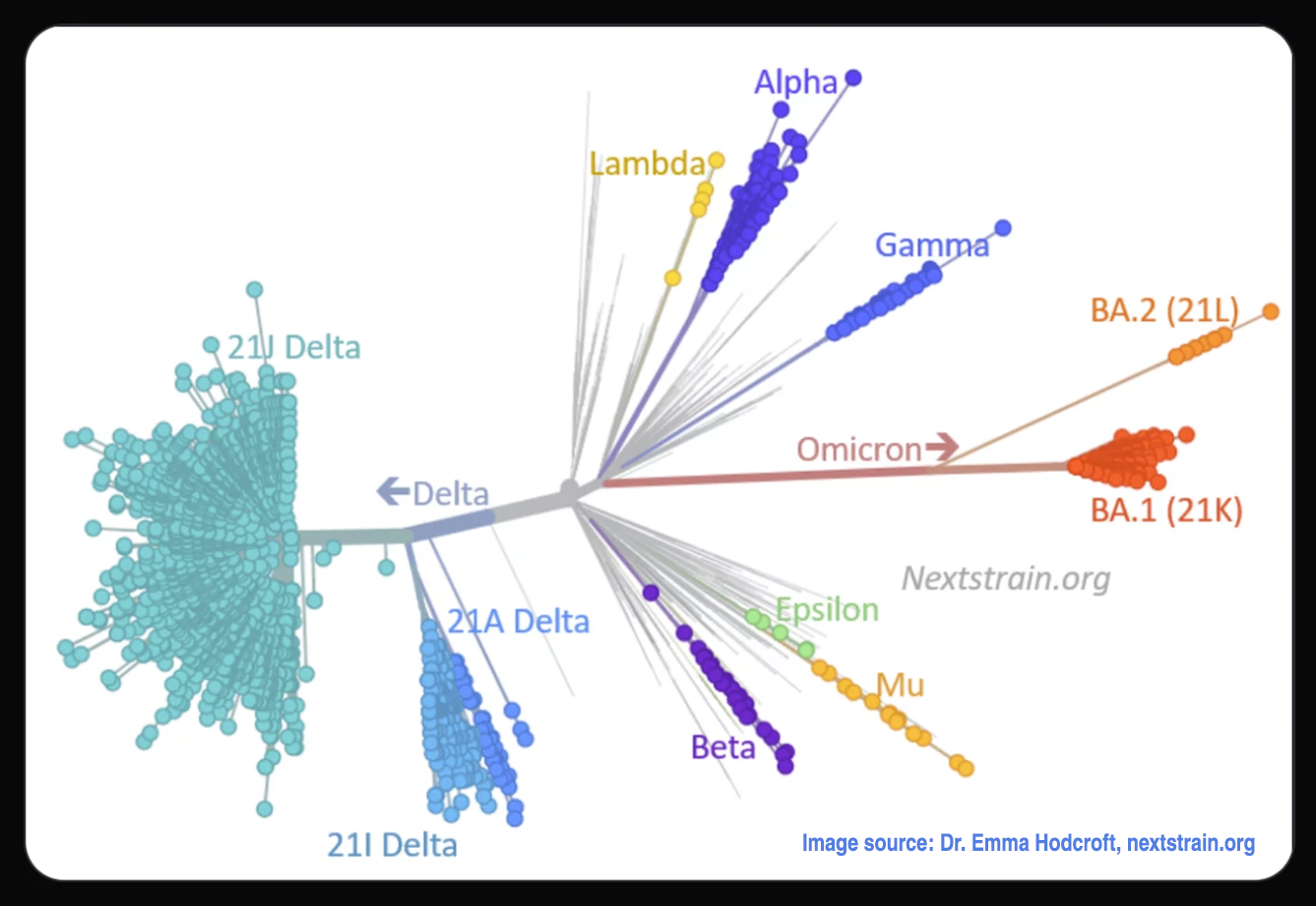What’s in a Name?
Virus and variant names can be confusing. Here’s what they all mean — in plain English.
Most of us aren’t scientists. I certainly am not one. In 2020, overwhelmed by it all, a friend confided in me that the only science she could recall clearly was her third-grade weather unit. (I see you, nimbus cloud!) And I don’t think she’s alone. But the pandemic brought the science of viruses into our daily lives. I’ve learned a lot, but keeping up with the terminology can be a challenge. You’ve heard all these words by now, but are you sure you know what they mean and where they came from?
Level 1: The Basics
Coronaviruses existed before this one — COVID-19 just brought them to our attention. They are a large family of viruses that usually cause upper-respiratory tract illnesses in people (think sniffles, sneezes, and stuffy noses). They got their name because some creative person looked at one of these viruses under a microscope and decided it looked like a crown. (I’ll bet they see things in clouds too!) Crown in Latin (and Spanish) is “corona.”
When someone says “coronavirus” today, they almost certainly mean the one that caused the pandemic and hogged media attention for two-plus years. The proper name for this specific coronavirus is SevereAcuteRespiratorySyndromeCoronavirus2. Whew, that’s a mouthful! And even its abbreviation is complicated: SARS-CoV-2.
Most of us don’t spend a lot of time talking about the virus itself, though. We talk about the disease that the virus causes after it invades our bodies. That disease is called Coronavirus Disease 2019, which we’ve shortened, for convenience, to COVID-19. (And these days, most of us just call it COVID). A similar, more familiar example of terminology like this is HIV (the virus), which causes AIDS (the disease).
It's complicated, but at least those are words, and they’re in English.
Level 2: Learning a New Language
When scientists realized the virus was changing rapidly, they started naming the variants that were gaining ground. The early names referenced the location where the new strains were first identified (e.g., South African variant, Indian variant). To avoid stigmatizing those places, the World Health Organization (WHO) stepped in and gave Greek letter names to what it calls “variants of concern”: the ones they considered to be a new or increased danger to global public health.
So we learned Greek. Just a few letters. Alpha, Delta, and Omicron are ones most of us know, but there were many more, including Epsilon, Gamma, Lambda and Mu. I liken them to tropical storms and hurricanes, which also get names. We remember the ones that did a lot of damage to us (e.g., Katrina, Harvey, Sandy, and recently, Ian). The others, not so much.
Level 3: It's All Just Letters and Numbers Now
My friend with a third-grade education in weather recently asked me, “What’s all this gobbledygook with COVID names now? They’re all letters and numbers? Did we run out of Greek letters?”
No, we haven’t run out of Greek letters yet. What changed was the way the virus evolved. Before Omicron arrived, new variants of concern came from completely different branches on the virus’s family tree, as you can see in the graphic below (Image source: Dr. Emma Hodcroft, nextstrain.org). Since January 2022, all the variants that matter have come from Omicron.
None of Omicron’s sub-variants have enough changes for the WHO to give them their own Greek letters. Instead, their names are a combination of letters and numbers that are a kind of code. The combinations don’t mean anything to you and me, but they tell scientists where each variant came from and when. Every COVID-variant has these letter-and-number assignments, even if they also have a Greek-letter name. Alpha, for example, is B.1.1.7. Delta is B.1.617.2. Here’s what some of the Omicron variant names that are currently in the news mean:
BA.5: BA refers to the Omicron variant, and 5 means it was the fifth identified subvariant.
BQ.1 and BQ.1.1 are getting some attention now: BQ means that it comes from BA.5. The first 1 tells you it’s the first identified subvariant of BA.5. The second 1 in BQ.1.1 means that subvariant is the first new branch from BQ.1.
Some people would like WHO to more generously assign the Greek names, and there have been others who tried to get their own name for a COVID variant to take off. But it gives me some comfort that the WHO (at least) doesn’t think there’s anything new I absolutely must add to my list of concerns right now.








